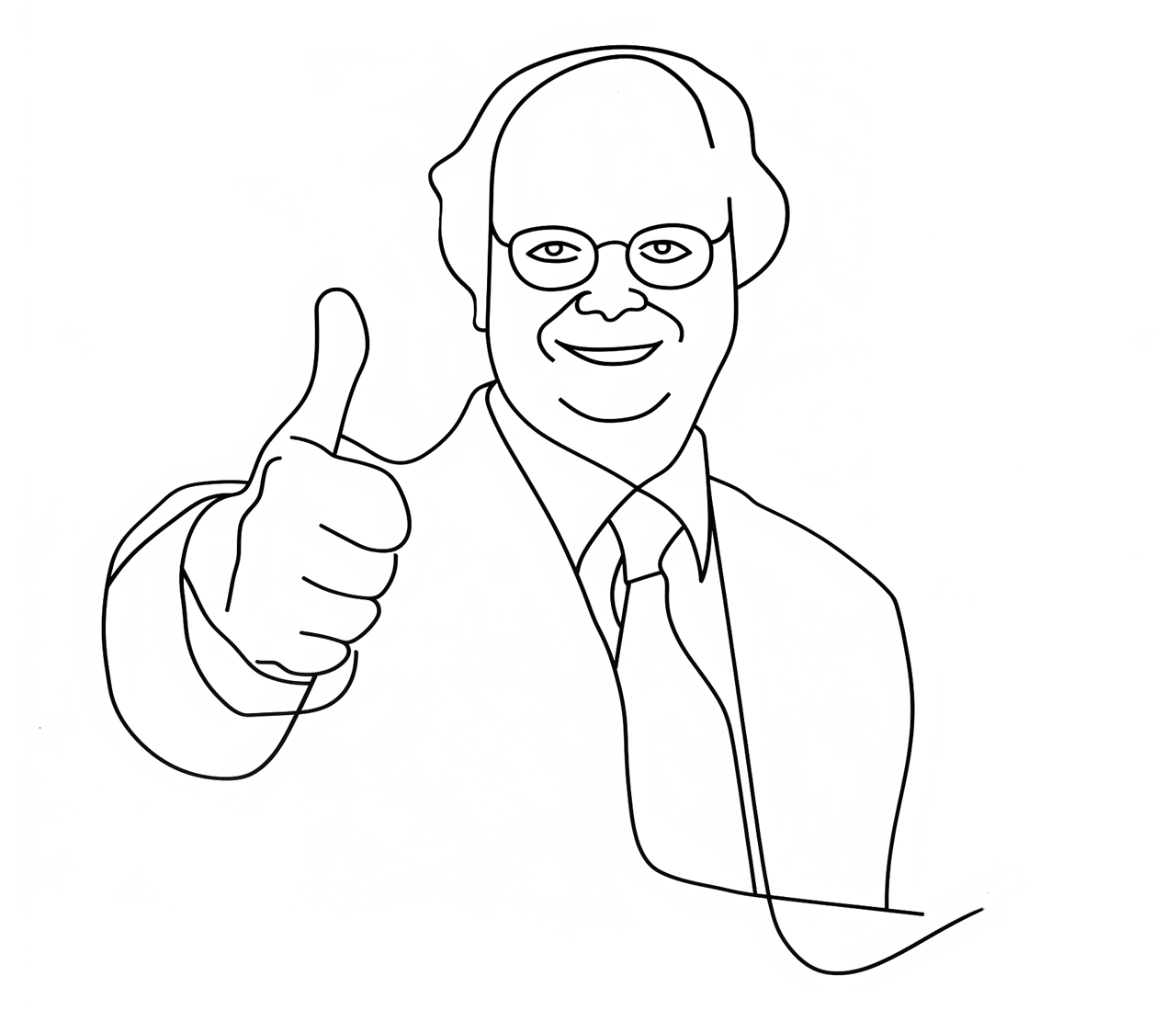Summary: The dual prompting approach in AI-driven UX design distinguishes between exploratory and detail-refining phases. Alternating these prompt styles can optimize your UX strategies and harness AI's potential for innovation and precision. Use both zero-shot and few-shot prompting for greater breadth and depth in creative problem-solving.
There are two opposing styles of prompts for using AI in UX:
Exploratory prompting that starts with few preconceptions, except for providing the AI with context about your current project. These prompts are meant to benefit from AI’s inherent ideation capabilities and broaden your thinking about the current problem. Examples include:
suggest 3 different user research plans with small, medium, and large budgets, employing a variety of research methods
list 20 different test tasks for a usability study of this design
Detail-refining prompting that builds on user-curated top hits from the exploratory stage. Examples include:
write a detailed screener for users with persona X
write out a complete description of task ideas 3 and 5 and include a motivating scenario for each. (This could be considered an advanced version of accordion editing, except that the detail phase might be in a later session.)
The best results come from alternating these two styles of prompting. You want to start with exploratory prompts and ideate a broad spectrum of ways of attacking your problem. One benefit of an exploratory start to a new UX project is to avoid locking yourself down too early and proceed along the lines you’ve always used. Try something new for a change. AI is perfect at suggesting new ideas. (Many of these ideas will be bad, which is why you should always ask for a plethora of ideas and use your expertise to curate the ideas.)
During the exploratory phase, mainly use zero-shot prompting, meaning that you don’t tell the AI how you want it to solve the problem. Just state the problem and see what you get, instead of limiting yourself to getting the same advice as always. In fact, ask for many solutions, since ideation is free with AI.
During the detail-refining phase, on the other hand, it will often be beneficial to employ few-shot prompts, where you supplement your request with a few (usually 3-5) good examples of what you’re looking for the AI to give you. For example, there are so many different ways of writing usability test tasks or recruiting screeners that you will get better results from providing the AI with examples of previous tasks and screeners that have worked well for you. Without such proven examples, AI models will simply pull from whatever they have found when scouring the Internet, and unfortunately, the Internet contains much bad UX advice.
(The terms “zero-shot” and “few-shot” and standard terminology in prompt engineering, which is why I use them here. In these terms, a “shot” is an example you feed to the AI to guide it toward helping you in a certain way. I think it would have been simpler to call these prompting strategies “no examples” and “few examples,” respectively, but shots are the standard word, so I’m using it to avoid causing even more vocabulary inflation than we already have.)
Note that this alternation of broadening and narrowing the scope of the prompts mirrors the famous double-diamond model of the entire UX design process, where you alternate between diverging (exploring the problem space or the solution space) and converging (refining your decision to arrive at the final decision for what to design and what to ship). This should come as no surprise, since defining a project (or a step within a larger project) is also a design problem. We’re simply designing a methodology instead of a user interface, but it’s the same general issue of problem-solving under constraints.
UI design is not art. UX methods are not academics.
Here’s a schematic of the recommended process for alternating the two styles of prompt in UX projects:
Diamond prompting of AI in UX work: we first use explorative prompts to broaden our understanding of the problem at hand, after which we use detail-refining prompts to arrive at the specific solution. (Ideogram)
We only have a single diamond for methodology work instead of the double diamond for UI design. We don’t alternate between a problem space and a solution space. Instead, we move between levels of scope, so the true model is more complex than shown in my simplified visual.
When using AI to define how we should proceed in a UX project, we should use diamond prompting at multiple levels:
Strategic scope: These decisions are at the level of the entire design project, focusing on creating an overall UX project plan and budget. This scope can span several months or a few years.
Tactical scope: After defining the project plan, we move to considering the process level, determining steps to progress from one stage to the next. This scope can stretch over several weeks or a few months.
Operational scope: Finally, we consider the activity level, defining specific actions for an individual activity. For example, what are the specific actions needed to run a usability study in a few days? The scope of this level will usually only be several days or a few weeks. If an activity takes more than two weeks, it’s really a process and not an activity and should be kicked up to the tactical level for refinement.
It's beyond my limited visualization skills, even with AI help, to make a set of nested diamonds to illustrate the full complexity of diamond prompting at 3 interconnected levels, especially since you will often need to loop back and revise higher levels of plans after seeing the outcome of lower-level work. It’s a common maxim in defense colleges that no battle plan survives contact with the enemy, and it’s the same in UX. Users are not our enemy, but they’re supremely unpredictable, necessitating constant replanning. Luckily, AI makes replanning more efficient, especially when using diamond prompting.
Research Study: How UX Researchers Use AI
I am frankly disgusted by the UX field's poor performance in discovering evidence about AI's usability. We’re in Year 2 of the biggest technology revolution since 1760 (when the Industrial Revolution took off), and UX researchers are sitting on their hands and refusing to come out to play. (This is despite my pointing out a year ago that UX needs a sense of urgency about AI and to take charge of the design of these new tools.)
All the best empirical studies I know about how AI is used and how it’s transforming business have been done by economists and management consultancies, not by HCI professors or UX consultancies, who are missing the boat.
Finally, some good UX research on AI use is starting to trickle out. Kuldeep Kelkar from UX consultancy UXReactor recently published the results of user research on how user researchers use AI in their work. (Yes, this is meta-UX research, but useful nevertheless. We need to improve the efficiency of UX work by at least an order of magnitude to fulfill my goals for the impact of UX on the world. Researching how UX researchers use AI and how they can get better at their jobs moves us toward this goal.) The study participants were user researchers studying the usability of health insurance websites, but the findings seem to generalize to researchers working on design problems in other industries.
The new findings echo some existing research, but provide additional nuance, which is always expected from qualitative observational research.
Similar to what I found in my study on the top AI tools used by UX professionals, the new study found that user researchers use generative AI to expedite the creation of many documents for research projects, such as “research plans, statements of work, screeners, and moderator guides.” The participants also used AI for “data analysis, theme identification from transcripts, and research report generation.”
Four interesting examples of that additional nuance coming from qualitative research:
Senior staff were better than junior staff at creating prompts for the AI to help them in drafting these documents. (While you might have hoped that expensive senior staff would outperform cheaper junior staff, it’s not a given that senior people would actually be better than juniors at using a completely new technology. Their extra experience might have been useless.) The reason seniors were better is that the best results came from feeding the AI more detailed and descriptive context in the prompts.
Junior staff very quickly improved their prompting skills. This echoes past findings that AI is a seniority accelerant.
AI use changed minds: UX people who used to be skeptical about AI “discovered unforeseen benefits and capabilities, turning apprehension into endorsement” after they got hands-on experience with using AI for their jobs. (This is similar to the finding that the percentage of business professionals who were optimistic about the future of AI almost doubled with personal AI experience, whereas concerns about the potential negative implications of AI were almost cut in half for respondents with hands-on experience with AI use.)
The best results came from using diamond prompting, as discussed above.
Short Quiz
Here are 10 questions to explore your understanding of this article. The answers are given after the author's biography. To get the full benefit of the quiz, I recommend that you attempt to answer all 10 questions on your own before looking at the answers.
Take the test! (Midjourney)
Question 1:
Which of the two phases of the AI prompting process for UX is metaphorically represented by this image?
Question 2:
According to Jakob Nielsen, who has conducted the most significant research on AI’s business impact?
a) HCI professors
b) UX consultancies
c) Economists and management consultancies
d) AI developers
Question 3:
Which of the following is NOT a finding about using AI for UX work?
a) AI can expedite the creation of research documents.
b) Senior staff are more proficient than junior staff in using AI for prompting.
c) AI can help identify themes from transcripts.
d) AI can replace UX researchers in the design process.
Question 4:
Why were senior staff more successful in using AI for prompting?
a) They had more experience with UX research.
b) They provided more detailed and descriptive prompts.
c) They were more familiar with the specific AI tools used.
d) They had received specialized training on AI prompting.
Question 5:
How did junior staff’s AI prompting skills evolve during the study?
a) They struggled to keep up with senior staff's proficiency.
b) They quickly improved their prompting skills.
c) They became overconfident in their AI prompting abilities.
d) They required extensive training to match senior staff's performance.
Question 6:
What effect did hands-on AI experience have on UX professionals' attitudes towards AI?
a) It increased their skepticism.
b) It reduced their concerns about potential negative implications.
c) It made them more optimistic about the future of AI.
d) It had no significant impact on their attitudes.
Question 7:
What is Jakob Nielsen’s opinion on the current state of research about how to best use AI in the UX field?
a) It is insufficient and needs to be expanded.
b) It is adequate and meets the current needs of the field.
c) It is excessive and should be scaled back.
d) It is irrelevant to the practice of UX.
Question 8:
What is the main implication of the finding that AI use changed the minds of UX professionals who were initially skeptical?
a) AI is a powerful tool that can transform the UX field.
b) UX professionals need to be more open to new technologies.
c) AI will eventually replace UX researchers.
d) AI should be used with caution and skepticism.
Question 9:
Which of the following is NOT a benefit of using AI in UX research?
a) Expediting the creation of research documents
b) Identifying themes from transcripts
c) Generating new research ideas
d) Eliminating the need for human researchers
Question 10:
What is the significance of the Industrial Revolution mentioned in the article?
a) It marks the beginning of the AI revolution.
b) It serves as a benchmark for the magnitude of the AI revolution.
c) It highlights the UX field's historical resistance to technological change.
d) It is an unrelated historical event mentioned in passing.
The answers to all 10 questions can be found after the following author biography. No peeking!
About the Author
Jakob Nielsen, Ph.D., is a usability pioneer with 41 years experience in UX and the Founder of UX Tigers. He founded the discount usability movement for fast and cheap iterative design, including heuristic evaluation and the 10 usability heuristics. He formulated the eponymous Jakob’s Law of the Internet User Experience. Named “the king of usability” by Internet Magazine, “the guru of Web page usability” by The New York Times, and “the next best thing to a true time machine” by USA Today.
Previously, Dr. Nielsen was a Sun Microsystems Distinguished Engineer and a Member of Research Staff at Bell Communications Research, the branch of Bell Labs owned by the Regional Bell Operating Companies. He is the author of 8 books, including the best-selling Designing Web Usability: The Practice of Simplicity (published in 22 languages), the foundational Usability Engineering (26,908 citations in Google Scholar), and the pioneering Hypertext and Hypermedia (published two years before the Web launched).
Dr. Nielsen holds 79 United States patents, mainly on making the Internet easier to use. He received the Lifetime Achievement Award for Human–Computer Interaction Practice from ACM SIGCHI and was named a “Titan of Human Factors” by the Human Factors and Ergonomics Society.
Subscribe to Jakob’s newsletter to get the full text of new articles emailed to you as soon as they are published.
Watch: Jakob Nielsen’s 41 years in UX (8 min. video)
Quiz Answers
Here are the answers to the 10 questions in the beginning of this article.
Question 1: Which of the two phases of the AI prompting process for UX is metaphorically represented by this image?
Correct answer: The image shows a hiker trying to locate a good place to camp for the night. This represents the exploratory phase of using AI for UX work. Alternate such exploratory prompts with detail-refining prompts (like sorting twigs for the campfire after having selected the campground):
The two phases of diamond prompting are shown metaphorically: exploratory (left) and refining (right). (Midjourney)
Question 2: According to Jakob Nielsen, who has conducted the most significant research on AI’s business impact?
Correct answer: (c) Economists and management consultancies.
Most good work so far has not been done by UX folks. Sad, but true.
There is so much potential for learning more about how to best use AI by using our many established user research methods. Please start doing UX research on AI. (And publish your findings!)
Question 3: Which of the following is NOT a finding about using AI for UX work?
Correct answer: (d) AI can replace UX researchers in the design process.
Question 4: Why were senior staff more successful in using AI for prompting?
Correct answer: (b) They provided more detailed and descriptive prompts.
Providing detailed context is particularly important in UX work.
Question 5: How did junior staff’s AI prompting skills evolve during the study?
Correct answer: (b) They quickly improved their prompting skills.
This is similar to the findings of other research outside the UX field: AI is a seniority accelerant.
Question 6: What effect did hands-on AI experience have on UX professionals' attitudes towards AI?
Correct answer: (c) It made them more optimistic about the future of AI.
This is similar to the findings of research with business executives: Executives with hands-on AI experience were more optimistic about AI use in business than were executives without personal AI experience.
Question 7: What is Jakob Nielsen’s opinion on the current state of research about how to best use AI in the UX field?
Correct answer: (a) It is insufficient and needs to be expanded.
It’s appalling how little work has been done on identifying the best ways of using AI during the UX design process. We know how to study how people use technology and how to make tech work better for knowledge workers such as UX’ers. Let’s do this research!
Question 8: What is the main implication of the finding that AI use changed the minds of UX professionals who were initially skeptical (see Q6)?
Correct answer: (b) UX professionals need to be more open to new technologies.
If you only read about AI, you will never understand its benefits for UX work. Hands-on experience is required.
Question 9: Which of the following is NOT a benefit of using AI in UX research?
Correct answer: (d) Eliminating the need for human researchers
AI will not eliminate human researchers. However, current AI will increase the productivity of AI staff by about 40%, and future AI is expected to double the productivity of UX staff, meaning that the price for any given UX advance will be cut in half.
Question 10: What is the significance of the Industrial Revolution mentioned in the article?
Correct answer: (b) It serves as a benchmark for the magnitude of the AI revolution.
AI is not just a small tweak to how we use computers. AI will be a completely new way to structure how we do business. The main impact is yet to come and will require systems thinking to redesign entire workflows, not standalone tasks.







Great information and fun quiz✌️
It is truism that it's much more effective to have a team with one designer and nine researchers than the other way around; it is another truism that this pretty much never happens in enterprise software design.
This approach can solve many problems and I'm going to employ this on my next project because I can guarantee I will likely be the main source of both research and design.
Thanks for this!